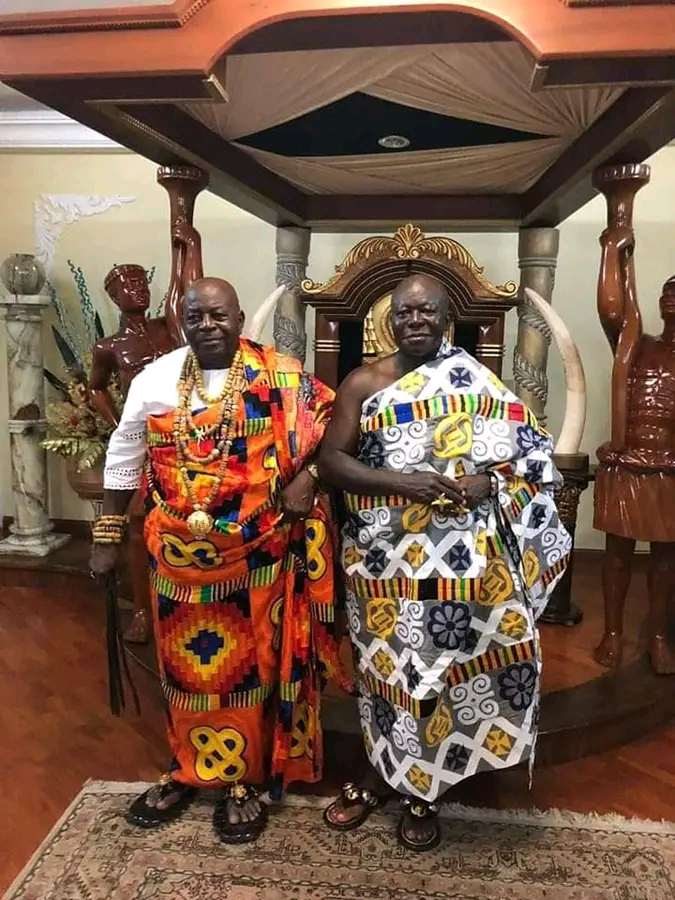Anlo/Ewe - Asante Relationship: Anlo Kotoko
It will surprise many Asantes of today to learn that; the Anlo ("awona" as pronounced in twi) people in the Volta region of Ghana are the most closest allies -in addition to the Akwamus- of the Asantes.
Anlos and Asantes have never fought any major wars in their history, either pre and or post Republic of Ghana. Historically, there was a military alliance between the Asantes and the Anlos, a coastal/southern sub-group of the Ewes. The alliance dates back to the mid 1750s.
The Anlos and Asantes were allies who assisted each other in times of wars by opening diversionary war-fronts to engage their enemies that were at war with each others friendly states. Anlos as allies supplied large quantities of firearms and ammunition to the Asantes whenever the trading ports west of Accra were blocked to the Asantes (see J. K. Fynn, Asante and Akyem Relations 1700-1831, page 16-17).
We should also recall that Asantes were allies of the Anlos, not only for military and political reasons, but for economic (trade) reasons as well. Records show that Asantes needed salt and relied heavily on the Anlos for the supply. Hence, a strong bond developed between the two nations based on trade. Asantes fought the Krobos and the other groups that tried to disrupt their salt supply. We should all remember that the Great Trade Routes that developed through Africa was built entirely on salt. Salt was an important and much sought-after commodity over which wars were fought at the time. It is only these days that this key information tends to be often belittled or completely overlooked.
Certain times, the Anlo State sent emissaries to the court of the then Asantehene to relate messages from the Anlo Awoamefia and their war-councils. An “honour stool”, Akrobortu was created by one of the Asantehenes in appreciation for the role that an emissary played as Linguist-Messenger-Emissary between the Anlo Awoamefia and the Asantehene.
Because of the centuries old friendship between Anlos and Asantes the late Otumfuo Opoku Ware II, the fifteenth (15th) Asantehene sent gold dust and other items for the burial and funeral rites of the late Torgbi Adeladza II, coincidentally the fifteenth (15th) Anlo Awoamefia (Paramount Chief) in 1998.
The Asante-Anlo/Ewe bond is perhaps the strongest phenomenon between any ethnic groups in today's Ghana. This is born out of the critical roles the Asantehene and Anlo Awoamefia play in each other's burial and coronations. Traditionally, the Asantehene is the one who buries the Anlo Awomeafia as was the case of the late Awoamefia Adeladza II. Even today, a royal Anlo-Ewe can easily form part of the Asantehene's circle to perform rituals in the sacred stool house during Akwasidae or Odwira to the exclusion of 99.9% Asantes”. Unquote.
Let me also add that in addition to the “personal friendship” between Asantehene Otumfour Osei Tutu I and Amega Atsu Tsala Akplormada (“the spear that is never thrown” as per correction), several other Anlos/Ewes have excellent interpersonal relationships with Asantes and other Akans. Of particular significance and or relevance is the interpersonal relationship that existed between the late Otumfuo Opoku Ware II, the fifteenth (15th) Asantehene and one of the Anlo “Bokorga” of blessed memory, the late Amega Awukutse Vorsa Kutor of Tegbi Kpota near Anloga.
Suffice it to say only that the late Amega Awukutse Vorsa Kutor was the chief “afakala” for late Otumfuo Opoku Ware II. We need not get into the personal details here!
In 1865, the Anlos entered into a tripartite alliance with the Asantes, under Asantehene Kwaku Duah, the most peaceful ruler of the kingdom of Asante, (see J. A. B. Horton, Letters on the political condition of the Gold Coast, since the exchange of territory between the English and Dutch governments, on January 1, 1868 together with a short account of the Ashantee War, 1862-4, and the Awoonah War, 1866, 2nd Ed. 1970).
After Kwaku Duah’s death on 27th April 1867 he was succeeded by his fiery young nephew of 25 years old, Asantehene Kofi Karikari who subsequently presented a sword to Awadada Axorlu I, the military commander of Anlo to seal the alliance. This sword is preserved till today and is among the regalia of the Kaklaku stool (see A. Kumassah, the Migration Saga of the Anlo-Ewes of Ghana, 2005 Edition, pages 76-77).
During the war of 1869-1872 (the only recorded Asante war in which the Awoamefia of Anlo took part), in which Asantes and Akwamus invaded central Eweland, it was Awadada Axorlu I who intervened because of the tripartite alliance and gave the missionaries escort and free passage to Keta.
It is due to this strong bond that made Anlos settle in Kumasi in large numbers and even have a particular place in the City named after them; "Anloga Junction" (Awonaga Junction in twi )
Any time you happen to be in Anloga or Keta, feel free and feel at home as an Asante.
